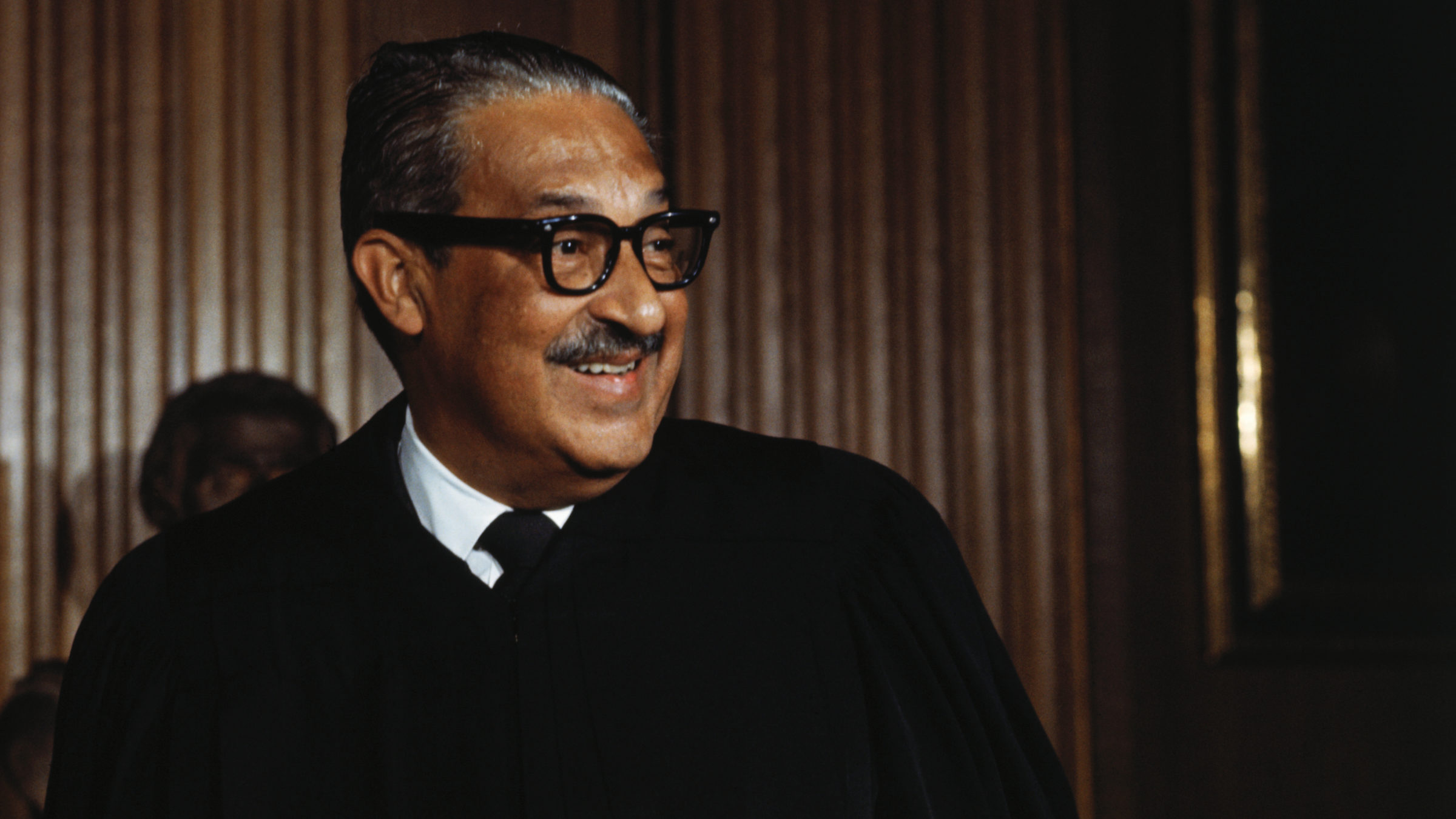Judge Paul Watford recently announced he’ll be leaving the Ninth Circuit Court of Appeals, creating a new vacancy on the country’s largest federal appellate court. His departure gives President Joe Biden a chance to remedy one of the federal judiciary’s most glaring oversights: More than 140 years after its establishment, the Ninth Circuit has never had a public defender among the ranks of its judges.
The Ninth Circuit is massive. It covers nine U.S. states and two territories and handles nearly a quarter of all federal appeals—far more than any other federal appellate court. Criminal cases, combined with habeas corpus and prisoner appeals, make up about a third of its docket. Yet none of the 116 judges in the Ninth Circuit’s history has ever brought public defense experience to the job. By contrast, 46 of the judges in its history—nearly 40 percent—have been prosecutors or worked for law enforcement.
While the Ninth Circuit’s ratio of prosecutors to defense attorneys is among the most lopsided of any circuit court, it’s not unique. A 2020 report revealed that only about 1 percent of all federal appellate judges spent the majority of their careers as public defenders or legal aid attorneys. Another analysis found that by the end of President Donald Trump’s term in office, former prosecutors outnumbered public defenders on the federal bench by a ratio of 4:1. My review of the biographies of the federal judiciary reveals that the Eleventh Circuit, too, has never had a public defender. The Fifth and Sixth Circuits don’t have any active judges who were public defenders. And the remaining circuit courts have at most one or two former public defenders, many of whom were just appointed by Biden in the last year or two.

Judge Paul Watford at his Senate Judiciary Committee confirmation hearing, 2011 (Photo by Bill Clark/Getty Images)
This matters because most issues in criminal appeals don’t have cut-and-dried answers. As an appellate defender, I can attest that they usually involve thorny questions of discretion, guesswork, and prediction, often with years of a person’s life (and their families’ lives) hanging in the balance. Is a five-year sentence “sufficient, but not greater than necessary” to punish a particular person for a particular crime? Was a lawyer’s decision to kick a Black person off the jury racially motivated? Did a police officer’s aggressive questioning coerce a person into confessing? Did a prosecutor’s flagrant misconduct—say, presenting testimony from a witness they know is lying—change the jury’s verdict?
These are judgment calls that swing wildly based on the perspective and experience of the person deciding them. And in a world where a disproportionate number of judges are former prosecutors, appellate courts answer these questions as you might expect: by ruling against defendants 93 percent of the time.
In addition to these substantive questions, someone in the judges’ conference room needs to remember how procedurally difficult the legal system can be for everyday people to navigate. That you can be found to violate probation, for example, because you had to take three buses across town to meet your probation officer and the second bus broke down. That you can’t put your habeas corpus petition in the mail on time because your prison housing unit was on lockdown for a month.
Justice Thurgood Marshall, the last Supreme Court justice with meaningful criminal defense experience before Justice Ketanji Brown Jackson, understood how vital this perspective is to a legal system that aspires to do justice. In a 1973 dissent, Marshall blasted the majority for assuming that a destitute person could pay a $50 court filing fee by simply taking it out of his weekly movie budget. “The desperately poor almost never go to see a movie,” he wrote, decrying the liberal Justice Harry Blackmun’s reasoning as “disgraceful” and warning that judges should not base their interpretations of the Constitution on “unfounded assumptions about how people live.”
Most appellate judges have not faced such challenges in their own lives. Nor did they ever routinely look a desperate person in the eye and hear a trembling voice give their side of the story. Rather, most appellate judges spent decades in insulated circles at white-shoe law firms or prestigious branches of the Justice Department—jobs that by their very nature required them to downplay any injustice to the little guy. That muscle memory is hard to shake. Every appeals court needs a Thurgood Marshall in the room—someone to remind the other judges how it feels to be on the margins of society, without access to the resources and privilege of the upper legal echelons.
Criminal defense isn’t the only area of law that’s severely underrepresented on the federal bench. Although immigration cases make up 28 percent of the Ninth Circuit’s docket, there’s never been an immigration lawyer nominated to the Ninth Circuit—or to any other federal appeals court, for that matter. Reproductive rights, racial justice, housing, LGBTQ+, labor, civil rights, the environment—all are still missing from the résumés of most federal appellate judges. The cumulate effect of these phenomena is staggering: a 2021 Cato Institute study showed that former courtroom advocates for the government outnumbered former advocates for individuals against government nearly seven to one.

Justice Thurgood Marshall at his swearing-in ceremony, 1967 (Bettmann / Getty Images)
For years, conservatives deemed the Ninth Circuit a liberal outlier that tended to rule in favor of criminal defendants and marginalized people anyway. But to the extent this reputation was ever accurate, it’s certainly not true after the deaths of several notable progressives and Trump’s appointment of ten new judges. Now, the Ninth Circuit is just as likely to be on the conservative side of a circuit split, causing even the current Supreme Court to reverse some of the Ninth’s recent hardline rulings on criminal issues.
To date, Biden has nominated a more racially- and professionally-diverse assembly of judges than any other president. But the professional diversity of his nominees dropped sharply after the first year. In 2021, he nominated roughly equal numbers of criminal defense attorneys, public interest lawyers, and prosecutors to the federal bench. But in 2022, he tapped nearly three times as many former prosecutors as public defenders or public interest lawyers. His last two batches of nominees included seven former prosecutors and one public defender.
This relapse may be because the (previously) evenly-divided Senate Judiciary Committee often deadlocked on his nominees who worked for public interest groups like the ACLU, the Center for Reproductive Rights, and the Southern Poverty Law Center—reliable targets for Republican senators. Or maybe a fear of losing the Senate in the midterm election led him to select more sitting judges, whose pre-existing background checks can ensure quicker confirmation. Whatever the case, his much-touted effort to diversify the federal judiciary suffered.
The results of the 2022 midterm elections should change that. With a 51-49 Democratic majority in the Senate, Biden now has two years and a clear majority on the Judiciary Committee to make good on his promises. The simple act of putting the first public defender on the Ninth Circuit would be a fine place to start.

